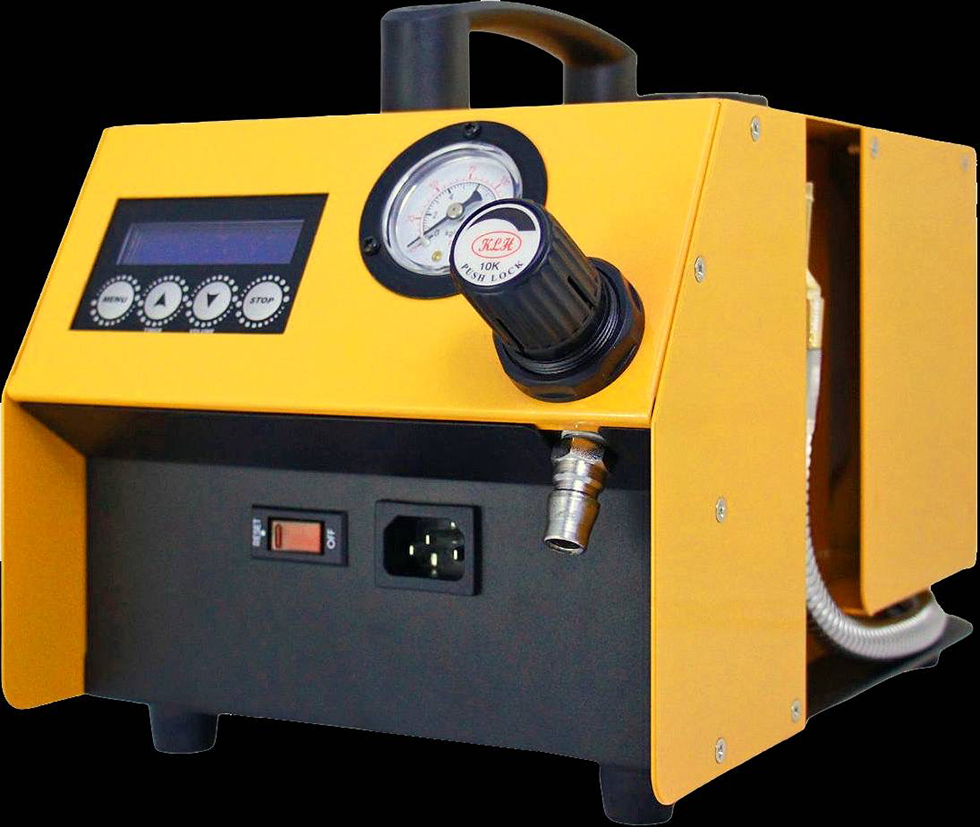
High-Mileage or First-Time Use Vehicles:
Special Note for Diesel Engines:
“Carbon Cleaning Spray” + “Actual Road Driving Following Carbon Cleaning” = “Complete Carbon Cleaning“
After the Carbon Cleaning Equipment is operational, immediately checking the carbon cleaning effects will not yield a conclusion. A complete carbon cleaning process must be carried out to obtain the final conclusion.
Mode: Please select from the control panel based on the vehicle type and requirements.
Air Pressure: Please adjust according to the recommended values. If using an extension nozzle, please increase the pressure by 0.5 kg.
RPM: During the carbon cleaning process, please increase the engine RPM according to the recommended values.
| Motorcycle |
Regular Maintenance |
High Mileage or Large Displacement |
| Mode |
Motorcycle 5 min / 10 ml |
Motorcycle 5 min / 10 ml Execute Twice Consecutively |
| Air Pressure |
2 kg |
|
| RPM |
1000 rpm |
|
|
Gasoline Car with 4-Cylinder Naturally Aspirated Engine |
Regular Maintenance |
High Mileage or First-Time Carbon Cleaning |
|
Mode |
Petrol Car 6 min / 30 ml |
Diesel Car 12 min / 60 ml |
|
Air Pressure |
2 kg |
|
|
RPM |
2500~3000 rpm |
|
|
Gasoline Car with 6-Cylinder Naturally Aspirated Engine |
Regular Maintenance |
High Mileage or First-Time Carbon Cleaning |
|
Mode |
Petrol Car 6 min / 30 ml |
Diesel Car 12 min / 60 ml |
|
Air Pressure |
2.5 kg |
|
|
RPM |
2000~2500 rpm |
|
|
Gasoline Car with 8 10 12-Cylinder Naturally Aspirated Engine |
Regular Maintenance |
High Mileage or First-Time Carbon Cleaning |
|
Mode |
Diesel Car 12 min / 60 ml |
Diesel Car 12 min / 60 ml + Petrol Car 6 min / 30 ml |
|
Air Pressure |
3 kg |
|
|
RPM |
1500~2500 rpm |
|
|
Gasoline Car with 4-Cylinder Turbocharged Engine |
Regular Maintenance |
High Mileage or First-Time Carbon Cleaning |
|
Mode |
Petrol Car 6 min / 30 ml |
Diesel Car 12 min / 60 ml |
|
Air Pressure |
2.5 kg |
|
|
RPM |
2500~3000 rpm |
|
|
Gasoline Car with 6 8-Cylinder Turbocharged Engine |
Regular Maintenance |
High Mileage or First-Time Carbon Cleaning |
|
Mode |
Diesel Car 12 min / 60 ml |
Diesel Car 12 min / 60 ml + Petrol Car 6 min / 30 ml |
|
Air Pressure |
3 kg |
|
|
RPM |
2500~3000 rpm |
|
|
Diesel Car with 4-Cylinder Turbocharged Engine |
Regular Maintenance |
High Mileage or First-Time Carbon Cleaning |
|
Mode |
Diesel Car 12 min / 60 ml |
Diesel Car 12 min / 60 ml + Petrol Car 6 min / 30 ml |
|
Air Pressure |
3 kg |
|
|
RPM |
Idle Operation, Rev Up for 10 Seconds Every 2 Minutes. 2500~3000 rpm |
|
|
Diesel Car with 6-Cylinder Turbocharged Engine |
Regular Maintenance |
High Mileage or First-Time Carbon Cleaning |
|
Mode |
Diesel Car 12 min / 60 ml + Petrol Car 6 min / 30 ml |
Diesel Truck 24 min / 120 ml |
|
Air Pressure |
3 kg |
|
|
RPM |
Idle Operation, Rev Up for 10 Seconds Every 2 Minutes. 2500~3000 rpm |
|
|
Large diesel vehicle (over 11 tons) |
Regular Maintenance |
High Mileage or First-Time Carbon Cleaning |
|
Mode |
Diesel Truck 24 min / 120 ml |
Diesel Truck+ 30 min / 150 ml |
|
Air Pressure |
3 kg |
|
|
RPM |
1800 rpm up |
|
|
Heavy-Duty Diesel Truck (Over 25 Tons) 8000~11000cc |
Regular Maintenance |
High Mileage or First-Time Carbon Cleaning |
|
Mode |
Diesel Truck+ 30 min / 150 ml |
Diesel Truck 30 min / 150 ml |
|
Air Pressure |
3 kg |
|
|
RPM |
1500 rpm up |
|
|
Heavy-Duty Diesel Truck with 11000cc and Up |
Regular Maintenance |
High Mileage or First-Time Carbon Cleaning |
|
Mode |
Diesel Truck 30 min / 150 ml |
Heavy diesel vehicle span30 min / 150 ml |
|
Air Pressure |
3 kg |
|
|
RPM |
1500 rpm up |
|
The removal of carbon buildup to varying degrees requires special treatment depending on the situation, and does not mean that all cases are the same.
Our documents will provide recommendations based on the best knowledge available. However, the content is not legally binding for processing and application as these are beyond our control. We reserve the right to make modifications for improvement or progress.
This is the XThruster® series product, the X Carbon Removal Machine. We have designed this excellent carbon removal equipment for vehicle body shops.
The main feature of this device is that it can remove carbon deposits during engine maintenance without the need for complicated disassembly.
This innovative solution allows you to remove carbon deposits from engine components with minimal disassembly and assembly steps without causing secondary pollution.